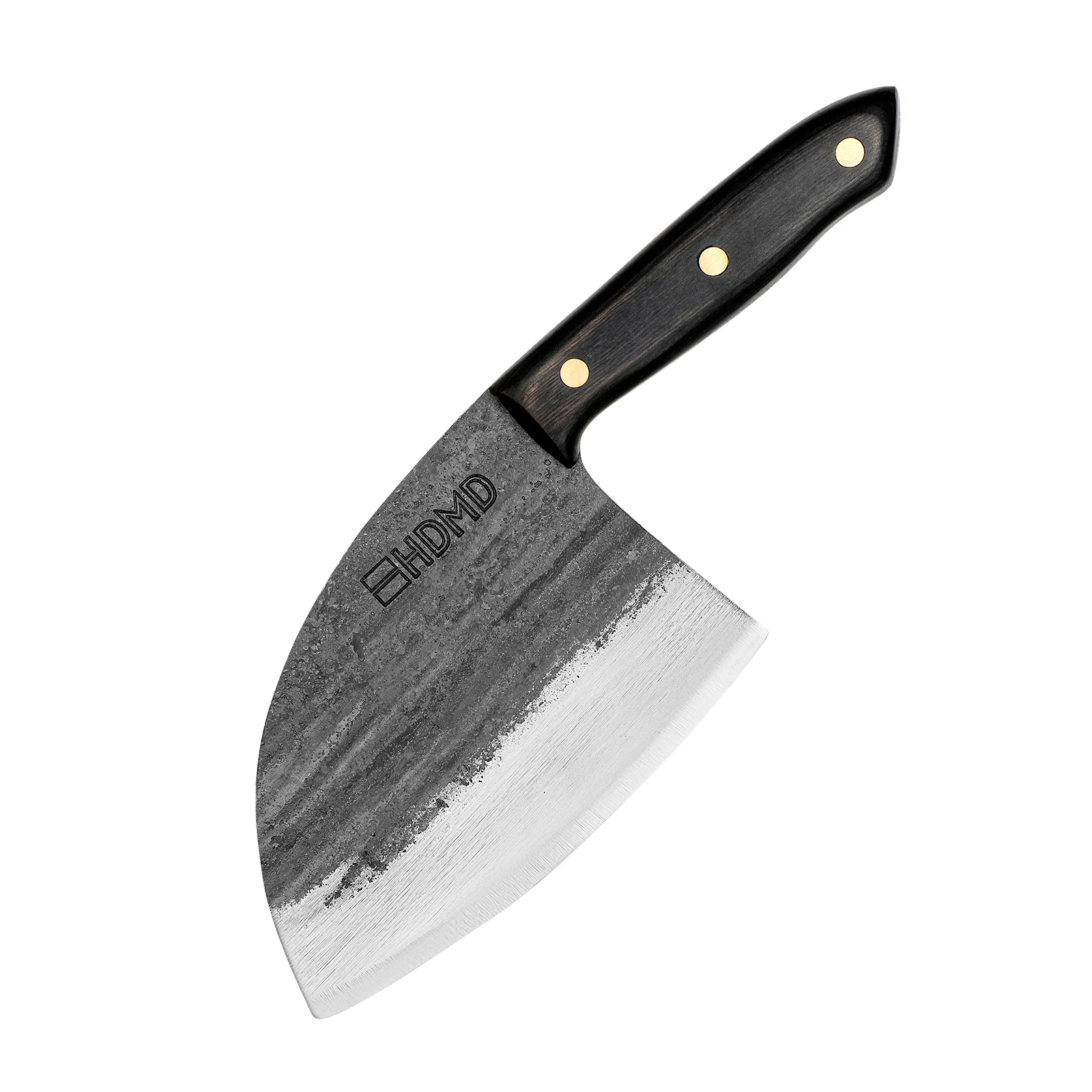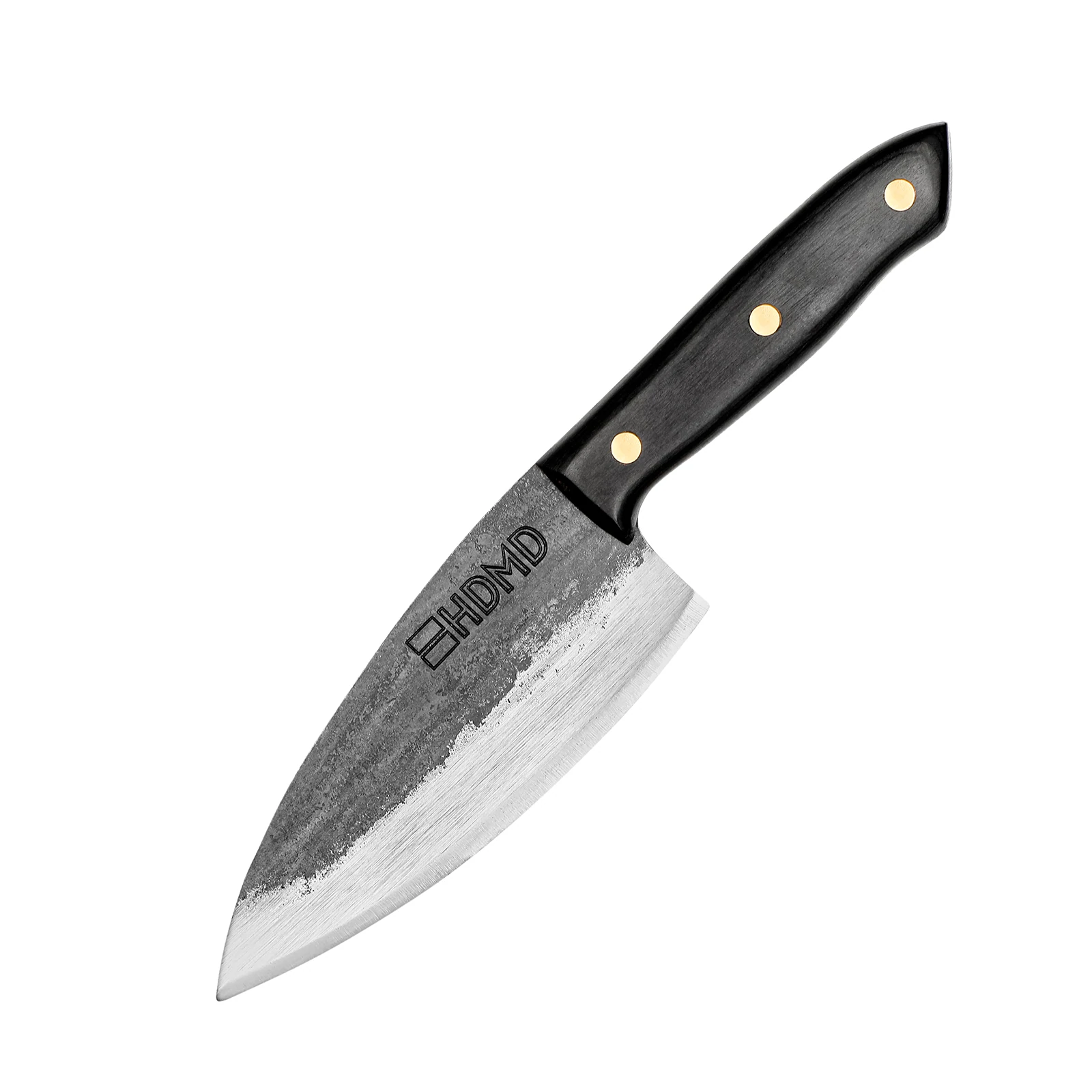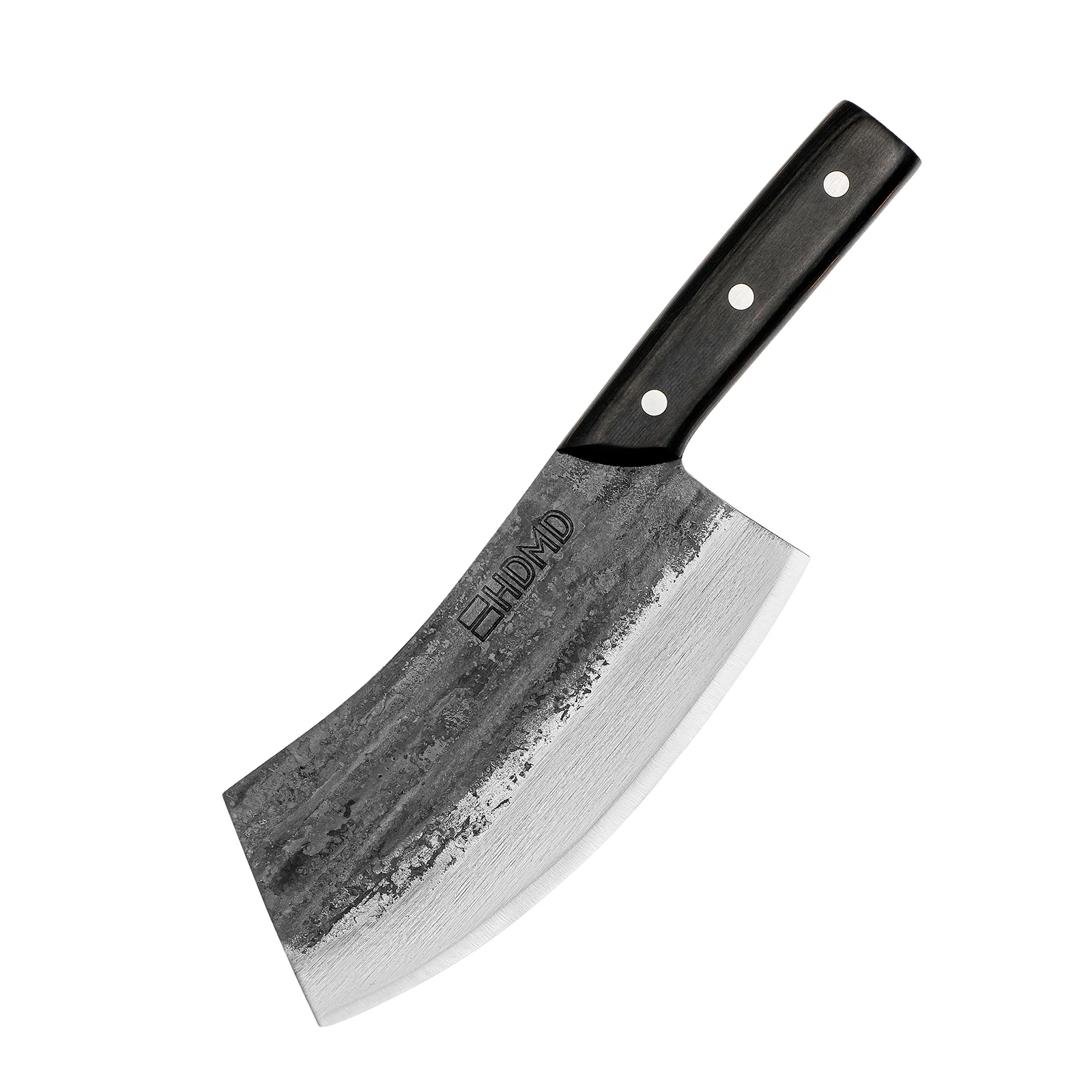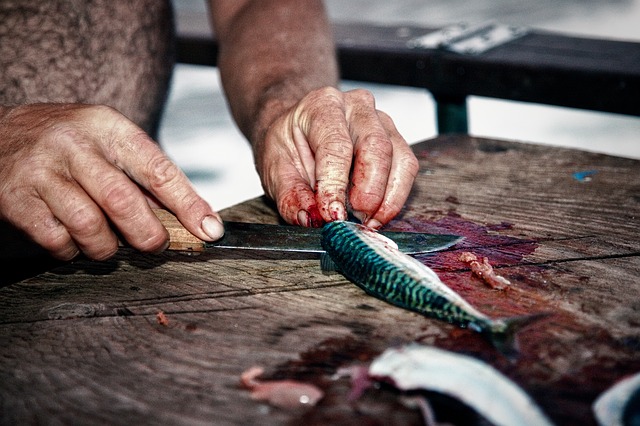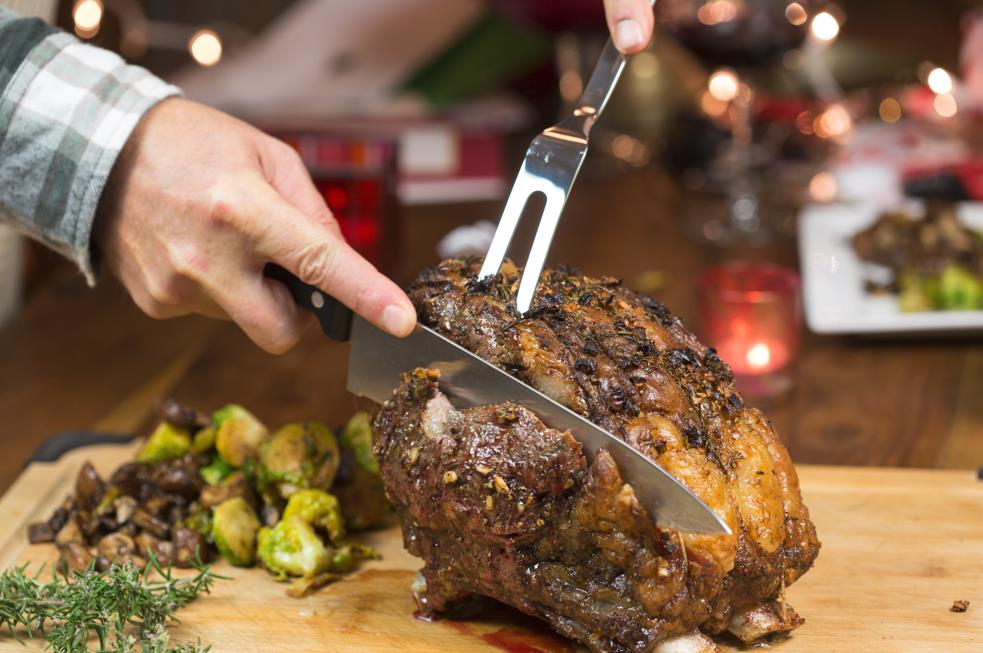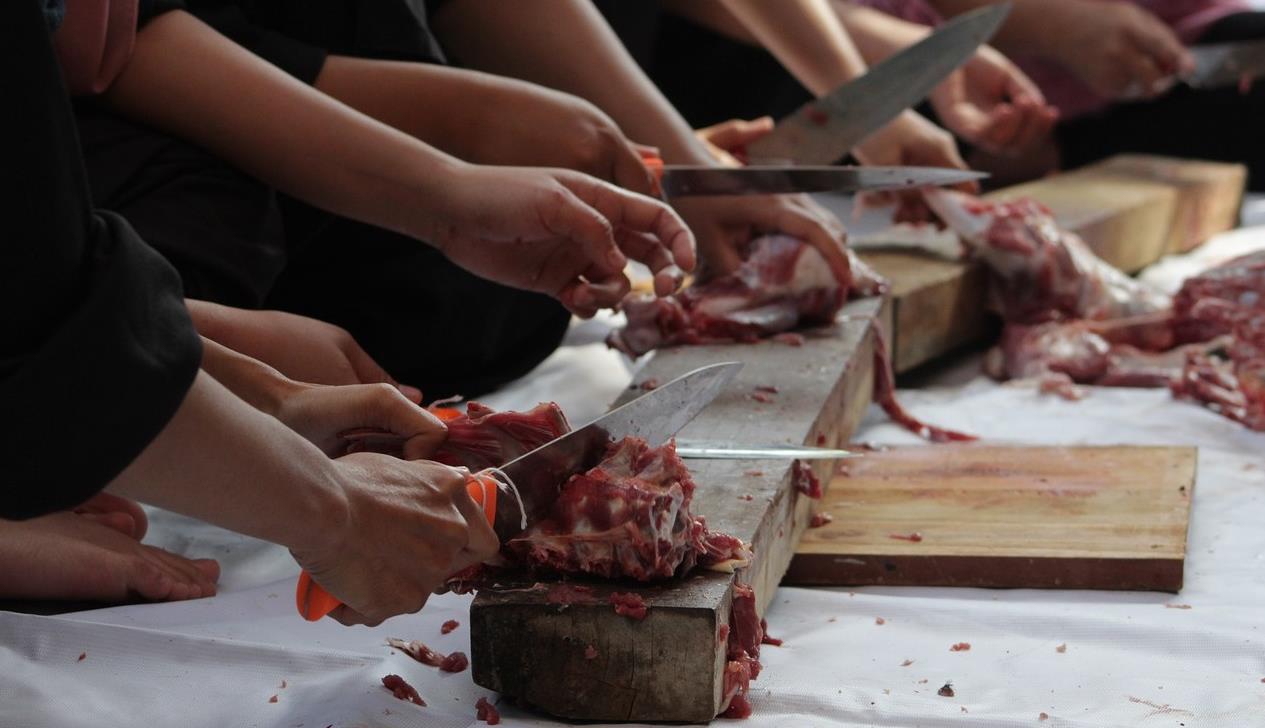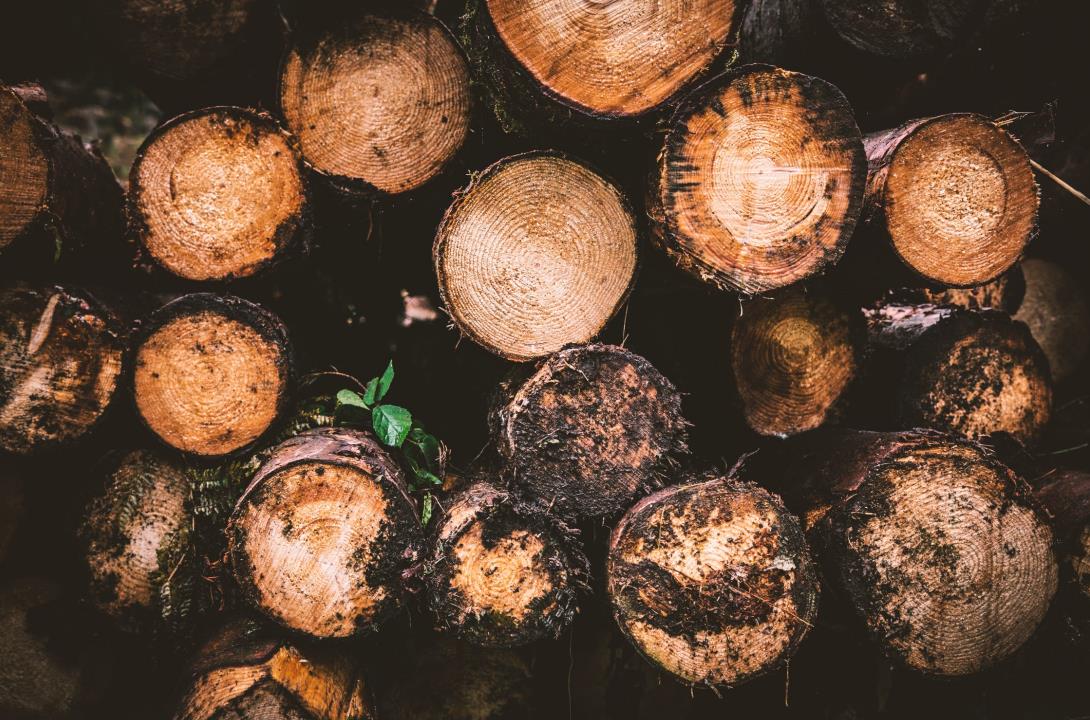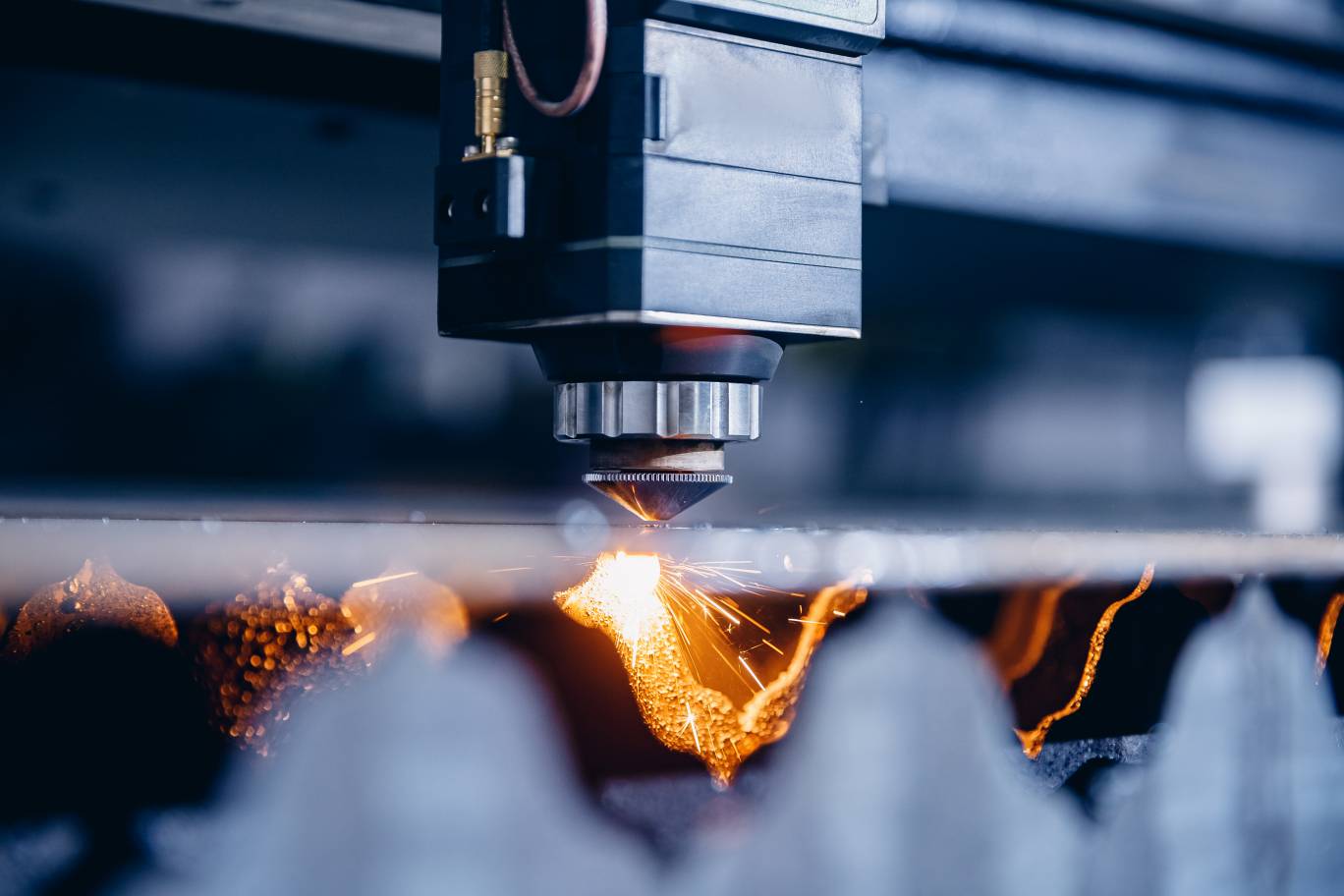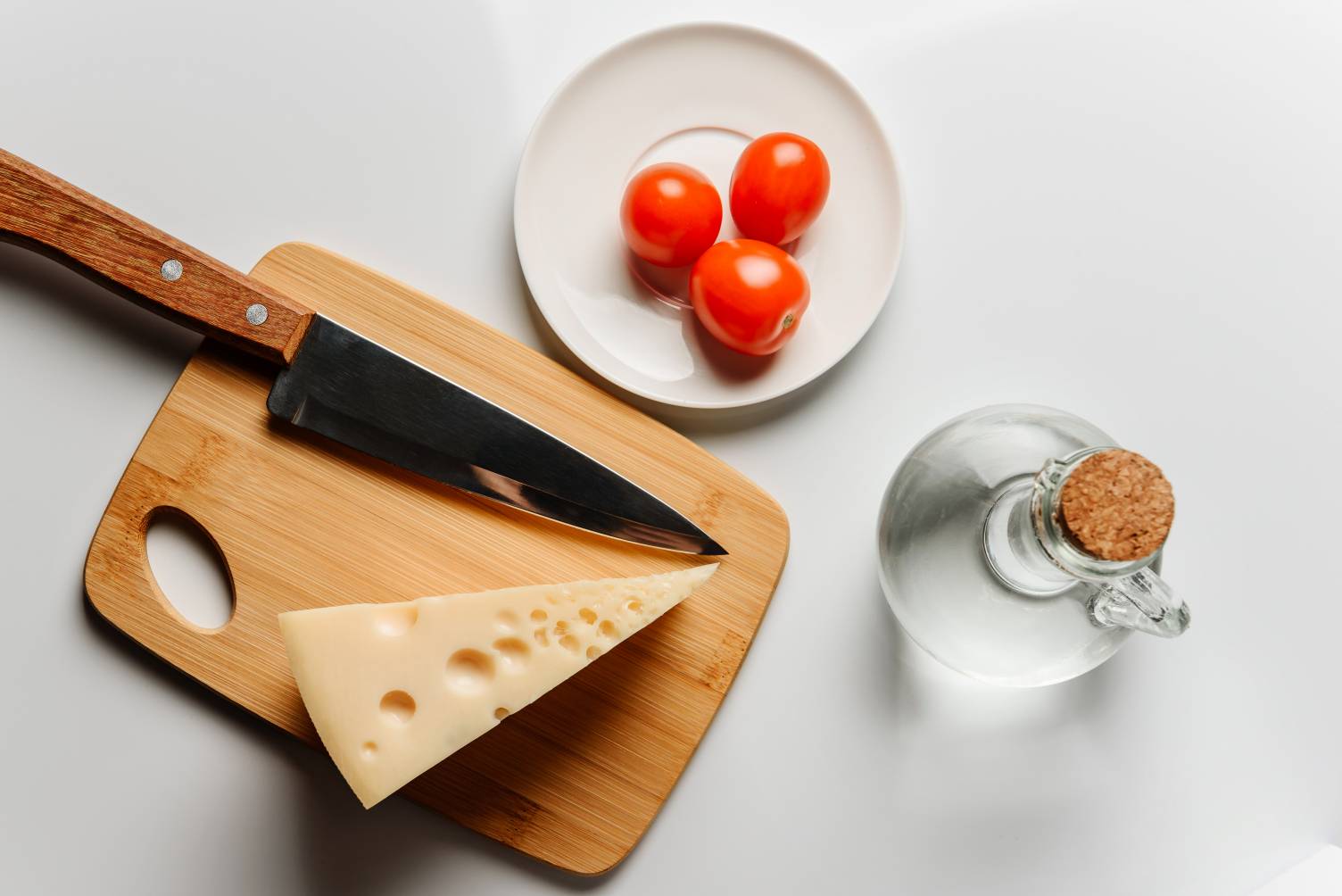Every kitchen should have a set of knives that serves different purposes — from slicing to butchering. The right blade delivers superior cutting precision that makes meal preparation effortless and more fun.
One of the essential kitchen knives you cannot do without is the butcher knife. While you can use a conventional kitchen knife to cut chunks of meat or dress the animal carcasses, the butcher knife is your best ally. Understanding the butcher knife uses and benefits would help you appreciate it more. Without further ado, let’s get started.
Table of contents
What is a butcher knife?
The direct interpretation is that a butcher knife is a knife that butchers use to process all types of meat. And a butcher knife doesn’t always come in only one shape. They are usually made of stainless steel. Under most circumstances, they don’t require much hardness and sharpness like Japanese knives do. But they do need to be tough and durable to withstand harsh use. For the same reason, the blade is often thicker than other types of knives.
Though a butcher knife was traditionally used by butchers, these types of knives are adopted by many chefs and even home cooks. Even hunters in the wild will utilize butcher knives to some extent.
What are the different types of butcher knives?
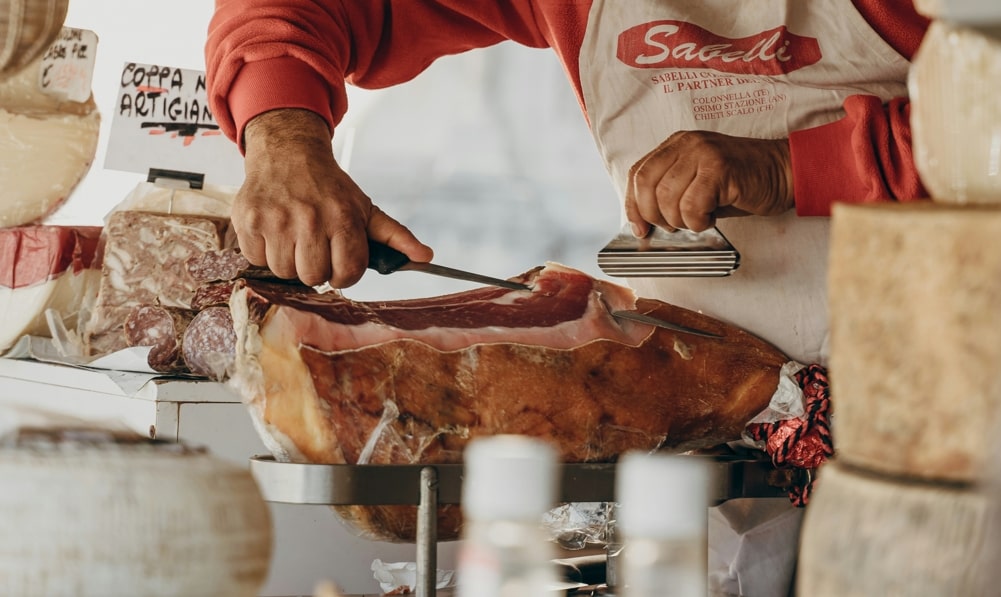
As we’ve previously established, a butcher knife doesn’t come with only one blade shape and design, as you might imagine. The most popular types are associated with butcher knife uses in commercial or residential settings. Here are the following:
Traditional butcher knife
Traditional butcher knives feature a wide blade with a curved tip, suitable for slicing, trimming, and skinning animals, and most importantly, for disjointing animal carcasses, especially the larger animals.
They often have a large size that may seem cumbersome to wield, requiring considerable strength and practice. However, in modern times, classic butcher knives for home cooks have been scaled down to smaller sizes to process smaller chunks of meat without bones.
Boning knife
This knife helps you make smooth cuts of meat around the bone. It has different subtypes – straight, curved, flexible, or stiff.
The curved boning knife is the most preferred because of its versatility. It helps trim, skin, and slice meats into small pieces.
The straight boning knife is more traditional, while the flexible boning knife can curve and bend around the bones. In addition, the boning knife has secondary uses such as skinner on sheep and goat, trimmer to take away hide, slicer for loins, and breaking knife for leg joints.
Steak knife
Steak knives come with serrated or straight edges and are primarily used at the dining table for cutting cooked meat. However, their sharp blades can also be suitable for slicing through raw meat during preparation.
Skinning knife
This knife is basically designed for skinning animals. For lambs, the skinning knife has a sharp blade with a not too curved or blunt tip. It can also be used for gutting animals and skinning small ones.
The blunt tip helps you avoid punctures, while the slightly curved blade is ideal for cutting the midsection of animals and releasing the internal organs.
Carving knife
The carving knife is typically a long and slim kitchen knife with a scalloped-edged, rounded tip.
The narrow width allows the blade to make neat, thin, evenly-sized slices with less dragging motion. Carving knives can also cut cakes perfectly.
Handpicked for you
True cutting power in the palm of your hand
Butcher knife uses
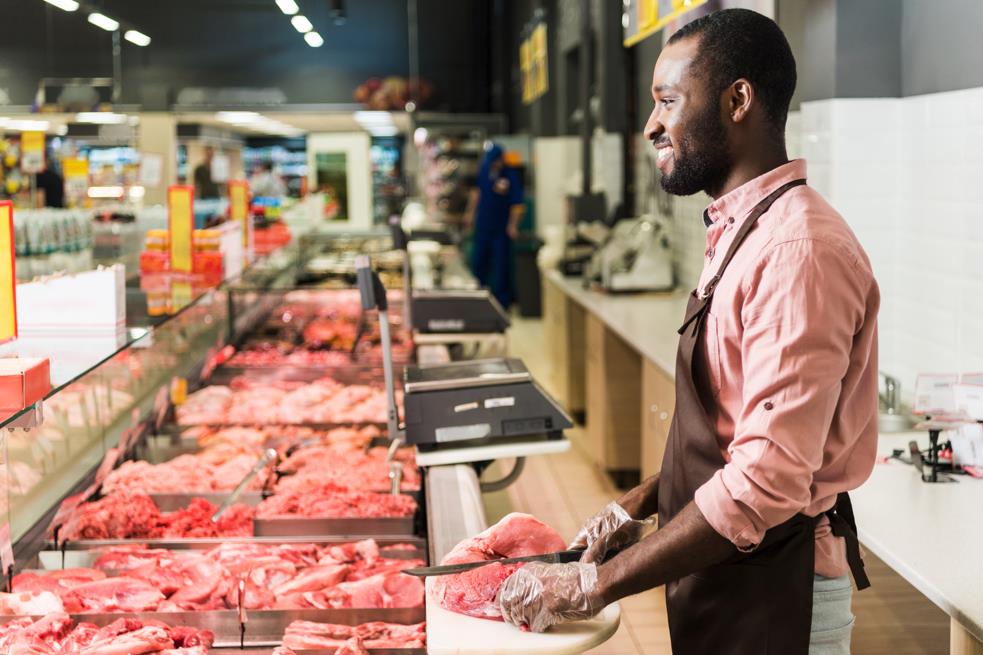
- Breaking down whole poultry: Whether it’s a chicken or turkey, your butcher knife must offer the control and sharpness required to section these birds properly.
- Separating meat from bone: An essential task that demands precision, which is where a butcher knife excels, especially one like the hankotsu knife.
- Trimming fat: With a butcher knife, you can trim unwanted fat from cuts of meat, enhancing the quality of your dishes.
- Chopping through tough meat: For this, your go-to should be a cleaver. It provides the heft and broad blade needed for heavier tasks, like going through beef or pork ribs.
Butcher knife utility uses
When you think of a butcher knife, you often imagine it being used to cut through thick cuts of meat or cleave through bone. However, there are other, less common uses for a butcher knife in the kitchen that may surprise you. Here are some alternate ways you can utilize this versatile tool:
- Vegetable chopping: A butcher knife can handle large vegetables like pumpkins or squashes. With its wide blade, you can chop through these with less effort than you would need with a smaller knife.
- Fish filleting: While typically not the first choice for this task, in a pinch, the sharpness of a butcher knife’s blade can be suitable for filleting larger fish. However, extra care must be taken due to the knife’s heft.
- Bread slicing: Surprisingly, the blade of a butcher knife can cut through a loaf of bread clearly without crushing it. Its length allows for long, smooth cuts without the need for sawing back and forth.
- Herb chopping: Large bundles of herbs can be quickly chopped with a butcher knife. The weight of the knife does much of the work, making it less laborious for your wrists.
- General kitchen prep: When you’re in a rush and need to resort to one knife for multiple tasks, a butcher knife’s versatility can make it a handy, all-purpose kitchen tool, though it won’t be as specialized for tasks like peeling or mincing garlic.
Skills/Techniques
Butcher knives are typically heavier, and you should adapt your grip and technique to maintain control. The right butcher knife makes a professional butcher efficient and productive in his job. For a certain kind of job, there is a perfect butcher knife. For instance, if your job is breaking down carcasses, your best tool is the breaking knife. Its long curved blade cuts through the carcass smoothly.
With full range cutting motion, this knife helps you create clean cuts. Another type of butcher knife you can use for breaking down cuts, slicing, or trimming is the cimeter knife. The blade of this knife helps you trim fat or make compact cut portions. Consider a cleaver knife for cutting bones, dense cartilage, and thick meat.
Japanese butcher knife (Gyuto) vs. traditional butcher knife
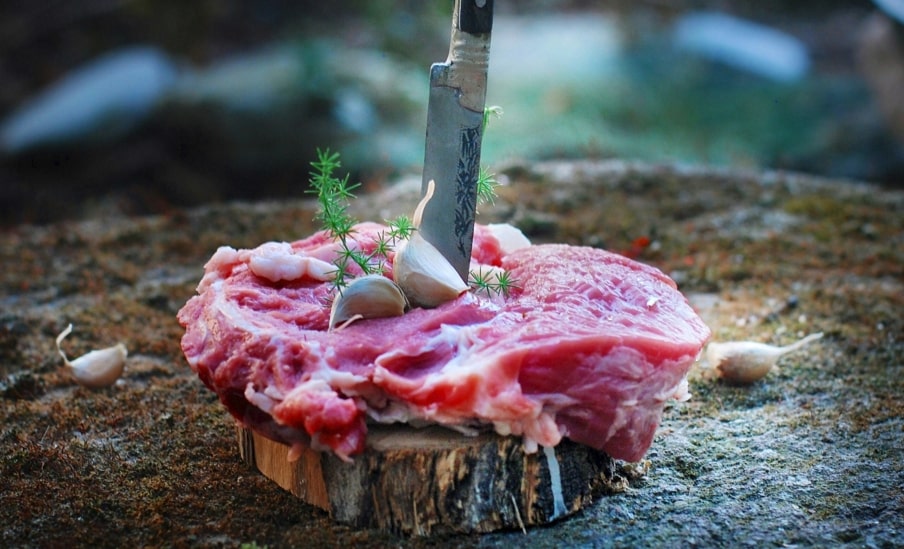
Japan is known for creating knives designed for specific tasks and specializations when it comes to functionality and quality. The chef’s knife Gyuto is an all-purpose kitchen tool and is ideal for most tasks.
How do they perform in the context of the following elements?
Material
Gyuto is a sleek chef’s knife crafted from high carbon Japanese steel that delivers a super sharp edge. This top-of-the-line steel comes from the Japanese City of Seki and is known for its incredible edge retention ability.
The traditional butcher knife is formed using sturdy high carbon steel known to hold the sharpness for a longer time. It is an absolute kitchen tool.
Blade
The Japanese gyuto has a lighter, thinner blade with a sharp tip for precision cutting. The flatter edge gives the knife a faster push-cutting ability.
The balance point of this knife is placed on the further edge of the blade, offering more agility and accuracy as you work your magic on the cutting board.
The traditional butcher knife has a classic design with an ultra-sharp, precision-forged, wide blade and curved tip. The length of the blade helps in making long, smooth slices, and the curve is for getting around the bones or under the skin.
Uses
The name gyuto is a Japanese term for ‘cow sword or beef knife.’ Its original purpose is to cut and break down beef. But its versatility makes the knife practically perfect for slicing, mincing, and chopping meat, spices, fruits, and vegetables.
The main purpose of the traditional butcher knife is for butchering and chopping big chunks of meat. The sharp, thick blade can easily break the bones apart and get between the meat with precision and no chipping. It is also useful in chopping off the fish head, cleaving, and stripping.
What to look for when choosing a butcher knife
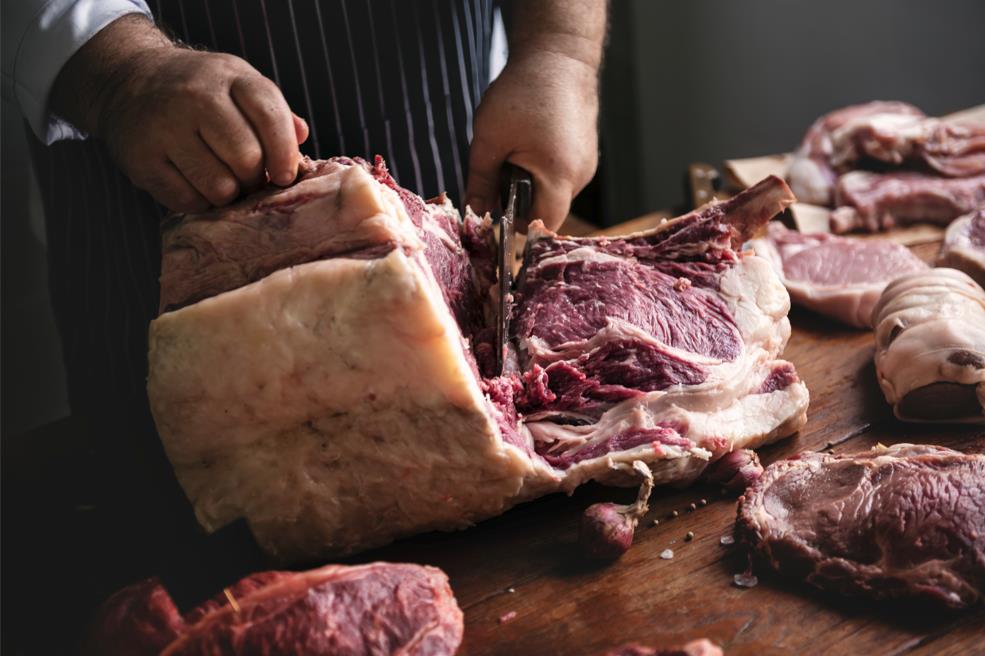
The right butcher knife matches your need, taste, and purpose. With a lot of options in the market, picking the right one can be confusing. Here are some elements you need to consider:
Balance
A well-balanced butcher knife gives you better control, letting you carry out the tasks with precision and better maneuverability. The construction of the knife and how it feels when you hold it will give you an idea of its stability and balance.
A full tang construction provides a balance between the handle and the blade. Full tang means the knife’s blade is one solid piece with a handle.
Blade quality
Go for a butcher knife with a thick blade made of high carbon steel to get the most of your investment. This material is known for its sharpness, but will a require a regular honing/sharpening routine.
In addition, the quality of the blade influences its cutting performance. A sturdy and reliable blade can withstand the frequent rough motion of breaking bones or tough pieces of meat. Find one that allows you to use brute force without messing the flesh or bones.
Size
The size of your choice depends on the tasks you need to do. It is vital to pick the right size to maximize your efforts. Butcher knives can range from 6 to 14 inches long.
Longer blades are perfect for skinning or sweeping off a large chunk of venison in a single stroke. The shorter blades are good for getting around the bones or slicing small pieces of meat like chops or poultry.
A 6-inch knife, for example, lets you work near the bone and make small slices or cuts. In addition to the butcher knife uses, the smaller ones are popular among hunters and campers.
Handle
Another essential feature of the butcher knife you need to observe when shopping for one is the handle. Butchering is a messy task where blood, juice, or fat of the meat usually end up on the knife’s handle.
It is crucial to have a firm yet comfortable grip when using a knife. To avoid the danger of slippage and possible harm to yourself while in the middle of the task, opt for a textured handle that is slip-resistant.
An ergonomic, contoured handle with proper riveting is a good choice. Another popular option is a wooden handle. It provides a traditional, comfortable feel but requires regular maintenance to prevent getting rough over time.
A butcher knife with a pakka handle is a popular choice because it provides anti-bacterial properties that eliminate the risk of contamination.
Aesthetics
While functionality is the king, there is joy when your butcher knife has a nice look. It is a personal preference, but if you are going to invest in a quality and durable knife, why not pick one that will remind you of your smart decision.
Warranty
Savvy consumers always check the warranty of the product. The manufacturer’s warranty indicates that the company is confident of the quality, durability, and cutting edge performance of their butcher knives. It adds to peace of mind when you need to have it replaced or return it for some reason.
Why do you need a butcher knife kit?
A butcher’s knife kit is a set of different knives for every purpose, including cutting, boning, stripping, splitting, paring, carving, skinning, filleting meat to the desired form and size.
While you can use a single knife for your meal preparation tasks, butchering job, and outdoor activities, the right type of butcher knife will make the job more efficient and quick.
The advantages of having a butcher knife kit are the availability of the one you need for a certain task, and buying a set is more cost-saving.
Takeaway
Now that you fully know the different types and uses of butcher knives, finding the right one would be a breeze. If the budget is no issue, get the best ones and be a pro in the kitchen. Having the perfect tools for meal preparation gives a sense of satisfaction, especially when you serve perfect slices of meals to your family or friends.
Need a new kitchen knife? HDMD features a collection of handmade kitchen knives you’ll surely love. Visit us today!

